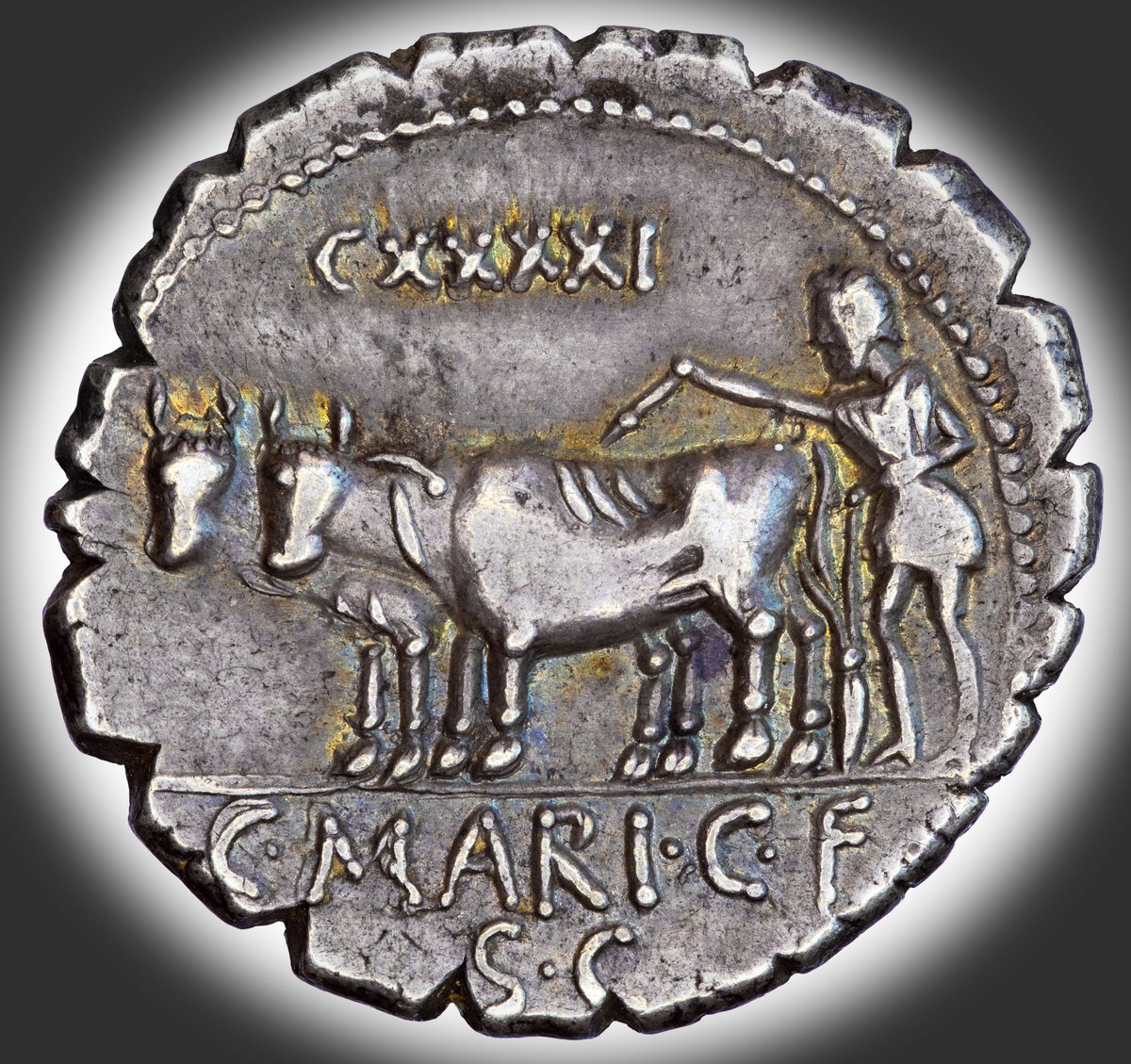
New coin: I am fascinated by the way Romans adapted their founding myths for the miniature canvasses provided by their money, so I am thrilled to add this Republican denarius struck under the moneyer Publius Satrienus in 77 BC, with a stunning depiction of the Roman she-wolf! 

The denarius bears a portrait of a helmeted divinity, once assumed to depict the goddess Roma but now often identified as a youthful Mars. Numerical control-marks behind the bust reveal that 105 obverse dies were created for this issue, with my coin struck with the 34th die made. 

A fearsome she-wolf strides across the reverse of the coin. In addition to the powerful frame and flexing musculature, a ruffled mane makes her appear more lionly than wolflike; her intimidating physique visually offset by the prominent distended teats that show she is lactating. 

While some see an obvious depiction of the mythical she-wolf ready to suckle the infants Romulus and Remus, others have interpreted the predatory wolf as a symbol of Roma itself, emerging victorious from the recent Social War having overpowered the rebellious Italic peoples. 

She cannot help but bring to mind the famous bronze Capitoline Wolf, an emblem seen all around modern Rome on murals, football team badges and litter bins. Long assumed to be an Etruscan or early Roman work, recent studies have questioned the ancient origins of the iconic statue. 

Analysis revealed the wolf was cast as a single piece, not unlike the church bells of the Middle Ages, whereas ancient bronzes were usually formed from multiple segments. Radiocarbon dating of organic materials in the statue's core placed its creation in the 11th-12th centuries. 

The controversial debate rumbles on and some see in the highly stylised wolf, Etruscan visual motifs little-known to sculptors of the Middle Ages - the wolf as a composite creature, given the body of a lion in an archaic fashion, with curly mane and crest along its spine. 

To my eyes the Satrienus wolf and to some degree the Capitoline statue, both evoke elements of the Chimera of Arezzo, an Etruscan bronze masterwork found in 1553 and now in Florence Archaeological Museum, with its taut muscles, prominent ribs, ruffled mane and spiked back crest.. 

While the Arezzo chimera is poised with all feet on the ground, preparing to pounce, a Greek stater of Sikyon which coincidentally helped artist and architect Giorgio Vasari identify the creature, shows a chimera with raised forepaw in a pose almost identical to our she-wolf. 

Artist Kristin Jones recently created a series of prints showing the visual evolution of the she-wolf over time, one of which was the wolf of Satrienus. The wonderful series of wolves, many taken from ancient coins, were jet-washed onto the grimy embankment walls of the Tiber. 



In a number of works Cicero describes a she-wolf statue hit by lightning in 65 BC:
“..the heights of the Capitol were struck with lightning, throwing down images of the immortal gods and the statues of ancient men, melting the bronze tablets on which our laws were written...
“..the heights of the Capitol were struck with lightning, throwing down images of the immortal gods and the statues of ancient men, melting the bronze tablets on which our laws were written...

"..the nurse of Roman dominion, suckling with life-giving dew that issued from udders distended, struck by lightning she toppled to the earth, bringing with her the children, torn from her station she left the prints of her feet in descending.”
(Cicero, On Divination, 1.20 )
(Cicero, On Divination, 1.20 )

Analysis has concluded that tantalising scorch marks on the wolf are the result of errors in the casting process and not remnants from Cicero’s lightning bolt. Ancient or not, there were probably a number of she-wolf sculptures of varying antiquity, style and medium, around Rome. 

The denarius is an excellent example of the type, unusually well-centered with most missing part of the wolf or moneyer’s name due to misaligned dies; struck as a young Julius Caesar was held to ransom by Cilician pirates and Mithridates the Great prepared to go to war with Rome. 

Read my full blog post on this denarius of Satrienus and the she-wolf mother of Rome, here: harneycoins.com/post/publius-s…
• • •
Missing some Tweet in this thread? You can try to
force a refresh





















